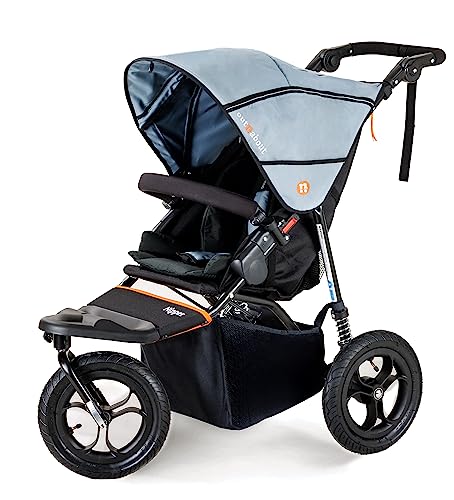5 Killer Quora Answers On Pushchair And Pram
페이지 정보
작성자 Kassandra Moral… 작성일25-10-28 18:28 조회12회본문
Understanding Pushchairs and Prams: A Comprehensive Guide
When it pertains to baby mobility, the terms "pushchair" and "pram" are typically utilized interchangeably. Nevertheless, they represent distinct types of baby providers, each crafted for specific stages of a child's advancement and differed parental requirements. This short article explores the crucial distinctions between pushchairs and prams, their functions, types, and factors to consider for new parents.
What is a Pushchair?
A pushchair, commonly referred to as a stroller in some areas, is designed for children who can sit up separately. Normally, pushchairs are contemporary, light-weight, and have a seat that can be reclined for included comfort. They may likewise include a five-point harness to make sure the kid's safety while on the go.
Secret Features of Pushchairs
- Light-weight Design: Most pushchairs are made from lighter products, making them easy to navigate and carry.
- Adjustable Seats: Many models offer recline options, accommodating resting or active positions.
- Canopy: Most pushchairs come equipped with a sunshade or canopy to safeguard the kid from sun direct exposure.
- Storage Space: They usually include a lower storage basket, perfect for holding diaper bags or shopping.
Typical Types of Pushchairs
- Standard Pushchairs: Traditional alternatives suitable for kids who can sit independently.
- Umbrella Strollers: Lightweight, compact, and easy to fold; ideal for traveling.
- All-Terrain Strollers: Built with larger wheels for off-road abilities and smooth trips on diverse surface areas.
- Travel Systems: Combines a stroller and a baby vehicle seat, allowing moms and dads to move their child seamlessly.
What is a Pram?
A pram, brief for "perambulator," is mostly created for infants, normally from birth up until around 6 months. Prams are structured with a flat lying position that supports a newborn's anatomy, guaranteeing they are nestled correctly.

Secret Features of Prams
- Flat Bed Design: Prams have a fully flat bed, which is essential for young babies who need to lie flat for comfort and health.
- Stylish Aesthetics: Many prams boast vintage or traditional designs, typically seen with luxurious materials and attractive surfaces.
- Suspension System: Quality prams typically consist of a suspension system to offer a smoother trip over rough surface.
- Extended Canopy: Extended sun security and rain covers are typical.
Common Types of Prams
- Classic Prams: Featuring a standard style, these are frequently styled to stimulate nostalgia.
- Convertible Prams: These can quickly switch from a pram to a pushchair and normally grow with the child.
- Lightweight Prams: More compact than conventional prams, making them much easier to transfer.
Distinctions Between Pushchairs and Prams
| Function | Pushchair | Pram |
|---|---|---|
| Use Case | For kids who can stay up | For newborns and babies |
| Design | Upright seat with reclining choice | Flat bed for lying down |
| Weight | Usually lighter | Heavier due to sturdy building and construction |
| Compactness | Folds easily and compactly | Might be bulkier, depending on design |
| Age Range | 6 months to 4 years or older | Birth to around 6 months |
| Price Range | More inexpensive options available | Often more costly due to materials and style |
Selecting Between a Pushchair and Pram
When selecting in between a pushchair and a pram, several elements necessitate consideration:

- Age of the Child: Newborns need a pram stores near me; older babies and young children will be more comfy in a pushchair.
- Way of life Needs: Parents who travel frequently might choose light-weight pushchairs, while those trying to find convenience in design may lean towards prams.
- Budget: Prams can vary from reasonably to costly; reliable pushchairs can cater to budget-conscious consumers.
- Storage Space: Consider how quickly the picked model can suit your car trunk or home storage.
Frequently asked questions
Q1: Can I utilize a pushchair for a newborn baby?
While specific pushchairs are designed with reclining functions that might accommodate babies, it is generally recommended to use a pram store near me or specifically developed infant cars and truck seat for newborns.
Q2: Are travel systems worth the investment?
Travel systems can supply benefit by integrating a safety seat and a stroller. They enable smooth shift from vehicle to stroller, which numerous parents discover important.
Q3: How do I maintain my pushchair or pram?
Frequently clean the fabric, check for mechanical concerns, and lubricate the wheels. Make certain to follow particular care guidelines provided by the manufacturer.
Q4: What is the weight limitation for pushchairs and prams?
Weight limits differ by design: Pram double prams - 121.199.172.238, normally, pushchairs accommodate as much as 50 pounds, while prams fit babies approximately 30 pounds. Constantly refer to the maker's guidelines.
Q5: Is it important to have a rain cover for my pushchair or pram?
Yes, a rain cover can protect your kid from rain and wind, maintaining convenience while preventing damp clothes.
In summary, pushchairs and prams serve important but distinct roles in the mobility landscape for parents and caretakers. Picking the best model depends upon the child's age, lifestyle needs, and household preferences. By understanding the qualities, benefits, and distinctions between pushchairs and prams, parents can make informed choices that make sure convenience and safety for their kid. Whether strolling through the park or navigating busy streets, the best mobility solution is out there waiting.























 Home
Home  고객센터
고객센터 




